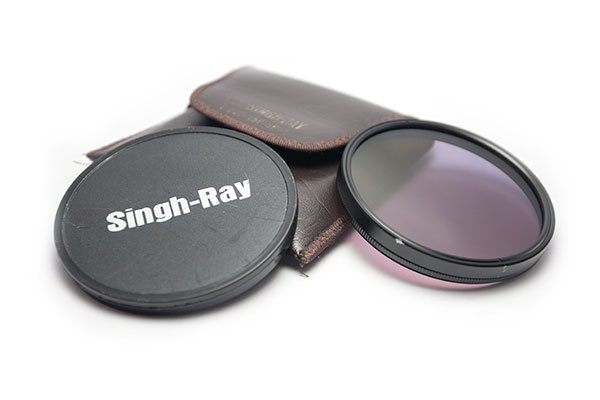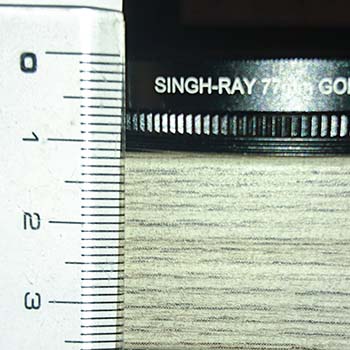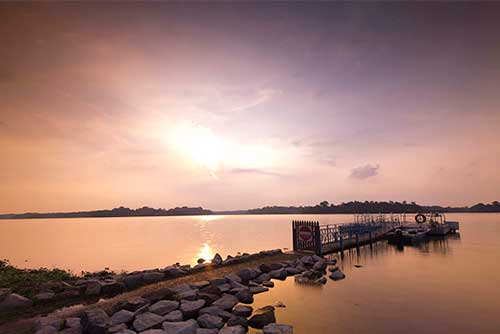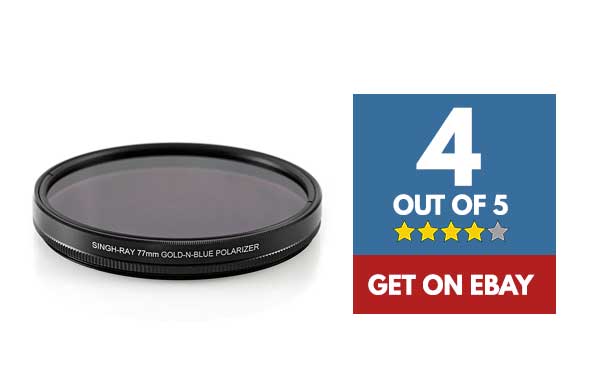INTRODUCTION
MIRACLE GOLD AND BLUE!?
Welcome to a review of the Singh-Ray Gold-N-Blue Polarizer filter – This is an interesting filter that I have used for years, and it is not your “regular Joe” polarizer. Yep, on top of increasing the contrast, the Singh-Ray will also turn blue water into a sea of gold.
Just what kind of sorcery is that? What kind of photos will it produce? Is it worth the money? Read on to find out!
OUTLINE
THE OVERVIEW
| Price | USD 240 to USD 480 (depending on the filter size) |
| Links | Official Website: Singh-Ray Gold-N-Blue Polarizer Get on eBay: Click Here |
| Build | Excellent build quality and optics. |
| Usefulness | Good for landscapers, unique filter. |
| Value | Good filter, but on the expensive side. |
| Average | An all-round mighty decent and interesting filter. |
SECTION A
FILTER WALKTHROUGH
 Let us now move into the gold blue itself – The build and optical quality, and how using it is like.
Let us now move into the gold blue itself – The build and optical quality, and how using it is like.
THE PACKAGE

I am pretty impressed when I first ripped the packaging apart. Most filters come with cheap plastic cases, but not with Singh-Ray. It came with a leather carrying pouch instead, and Singh-Ray seems to be the only one doing it in the entire world.
BUILD QUALITY & PROFILE

The ring is made of metal and not plastic. The thick piece of glass also seems pretty sturdy and impressive. Nothing about this filter feels like cheap material. That, however, as with all circular polarizers, the Singh-Ray did not have a front filter thread. Plus, the gold-blue filter comes at 1.1 cm thick – That will have some serious vignetting issue with wide-angle lenses.
Update – Singh-Ray has released a “thin profile” gold-blue polarizer, but it comes at an extra price… Shouldn’t less material be cheaper?
THE OPTICS
To date, the Singh-Ray has never had never caused any ghosting, flaring nor a gross chromatic aberration. Overall, the filter produces very punchy colors and contrast – Which I have come to like, but hate at times.
If there is anything bad to say about the optics, it has to be the vignetting. It can be fixed in Photoshop, but it is just a pain to be doing this with all the photos. The slim profile should suffer less vignetting if you don’t mind paying those extra dollars though.
USAGE EXPERIENCE
My experience with the gold-blue has been kind of… clunky. This is one filter that is not “easy to use” for sure. It does not have front filter threads, and it is one thick filter. To avoid heavy vignetting, I have to remove my UV filter before putting on the gold-blue… and it still vignettes on my Nikon D800E + 16-35mm. I really do not recommend any filter stacking as this will cause more vignetting.
The next pain point comes when I want to use graduated ND filters to balance out the exposure. Since it does not have front filter threads, I find myself manually holding a piece of GND in front very often. Now imagine doing that for a long exposure. 🙁
The last thing to note about shooting with the gold-blue is that it really messes up the white balance. Do not even attempt to shoot in auto white balance when the gold-blue is attached. You will probably end up with oddly white-balanced images. So in most times, I just fix my white balance to “sunrise/sunset” and let the camera do the rest.
GALLERY – WHAT IS SO SPECIAL ABOUT IT?
I have the Singh-Ray “Gold-N-Blue” Polarizer filter for over a year now, and it has been in my backpack for every landscape shoot. So what is special about this filter that has become a part of my photography staple? I am sure that most landscape photographers will know what a “circular polarizer” is. That “spinning” filter thing that magically boosts the contrast? The filter that makes the sky bluer than blue?
You might know that “normal” polarizers will increase color saturation and reduce reflections… But how about having one that can turn your skies and waters into gold? I believe some newbies might think – I can do the same with a piece of a colored filter. Well, sadly no. There is a world of difference between polarizers and a cheap piece of colored plastic.
I am not going to start a long lesson here on how things work. But in the layman terms, cheap color filters will only give you a color cast and reduce the optical quality. A good unique polarizer will give you a lot more and boost the contrast. Below are a few photos that I have taken with the Singh-Ray. You decide for yourself if a cheap piece of plastic is going to reproduce those results.
Now for a few “sans gold-blue filter” shots :
Quick note. For those who are curious, these are taken with my trusty Nikon D800E and either Nikkor 24-70mm f/2.8 or Nikkor 16-35mm f/4 lens.
SECTION B
USEFUL BITS
 That’s all for this review, and here is a small section on some extras and links that may be useful to you.
That’s all for this review, and here is a small section on some extras and links that may be useful to you.
COMPETITION & ALTERNATIVES
While some people might start thinking that cheap pieces of colored yellow/blue plastics are good alternatives for the Singh-Ray, they are not. Really. When I first did some research on the Singh-Ray, the only similar filter I could find was the Cokin Blue/Yellow Polarizer.
But in the end, I decided that the Cokin polarizer is not for me. I am not going to do an apple-orange comparison here, but rather, touch on why I chose the Singh-Ray. Well, for a start, the price for Singh-Ray is $240, and the Cokin is at $180 (based on a 77mm filter).
While I was tempted to go for the much cheaper Cokin at first, some online research turns out that the Cokin vignettes very badly on 77mm lens, even though it is marked suitable for a 77mm lens. Plus, the yellow/blue really just doesn’t look as good as the Singh-Ray (at least for me).
So the choice was clear for me. Even though the Singh-Ray is pricier, they do have a good history of producing excellent filters.
THE GOOD
- Excellent optics, excellent build quality.
- A unique filter.
- Produces punchy images with beautiful tones.
- It comes with a leather filter pouch.
THE BAD
- Not a thin filter… it is not recommended to stack any other filters on top of this one. There are no front filter threads to stack either way.
- Vignetting on a full-frame with a wide-angle lens.
- Produces overly strong colors at times.
- A rather expensive filter.
SECTION C
THE VERDICT
 This is definitely not a filter that you will want to keep attached to your lens for conventional use. But when the correct elements are aligned – clouds, water, and sun. Bam! The gold-blue works it’s magic well. Despite the clumsiness and all these “quirks” that the gold-blue suffer from, this is still one of the best filters that I have used.
This is definitely not a filter that you will want to keep attached to your lens for conventional use. But when the correct elements are aligned – clouds, water, and sun. Bam! The gold-blue works it’s magic well. Despite the clumsiness and all these “quirks” that the gold-blue suffer from, this is still one of the best filters that I have used.
Or rather, I have found no other filters in the world that can replace this one. The gold-blue may only work for certain compositions, but I personally love the contrast and color tones that it produces. Definitely something worth keeping in the bag for a landscape photographer.
Whether you share the same sentiments, I do not know. But as for me, the gold-blue is not going to leave my backpack. I do hope this review has given you some good considerations for this filter. Good luck, and happy shooting!





